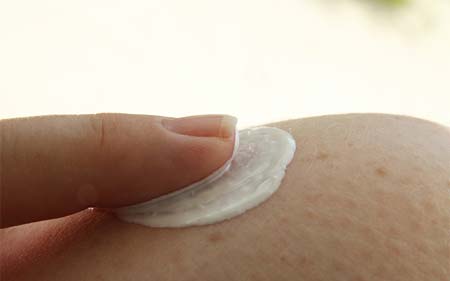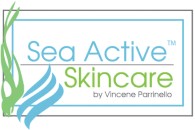Treatment for cancer aims to destroy or remove cancer cells. The most common procedures are surgery, chemotherapy, and radiation therapy, and each can be used either alone or in combination.
Skin Reactions from Radiation Therapy
It is not unusual for the skin to change during radiation therapy. Each person reacts to treatment differently. The way the skin reacts to radiation therapy depends on various factors like which part of your body is being treated or the type and dose of radiation that you get.
If you are undergoing radiation therapy, tell your doctor or nurse if you smoke, suffering high blood pressure, diabetes, any collagen vascular diseases, such as rheumatoid arthritis or dermatomyositis, or a history of skin cancer in the area to be radiated. These conditions may affect the way your wounds heal and the extent of your reaction to the radiation therapy.
Types of Skin Reactions During Radiation Therapy
Your skin may turn pink or tanned at the treatment site where you’re getting radiation therapy. As your treatment continues, you will notice your skin becoming bright red or very dark and swollen. Your skin may also start to feel dry, feel tight, be itchy, and look flaky.
Some people undergoing radiation therapy may also develop a rash or blisters that may open and peel, in the area where they are getting treatment. These skin reactions are most likely to peak until two weeks after your last treatment. It may take several weeks after you finish your treatment for your skin to improve.
Your treatment team will see you weekly while you’re receiving treatments to examine your skin and make the needed recommendations for changes in your skincare.
Skin Reactions from Radiation Therapy

Keep your skin clean
Bathe daily using warm water and mild unscented soap. Rinse your skin thoroughly and pat it dry using a soft towel. Wash the area being treated with the utmost care and gentleness. Don’t use a washcloth, scrubbing cloth, loofah, or brush.
The tattoo marks you got before your treatment are permanent and won’t wash off. You may get other markings during radiation therapy, such as an outline of your treatment area. If your radiation therapist gives you the go-ahead, you can remove these markings using mineral oil.
Never use alcohol or alcohol pads on the area getting treatment.
Moisturize your skin often
A good time to start using a moisturizer is when you begin treatment. Moisturizing can help lessen any skin reaction. Choose a moisturizer that does not have any fragrances or lanolin. Several over-the-counter moisturizers are good to use, or you can ask your nurse to suggest one for you. Use only one product at a time unless your nurse tells you to use more.
Your nurse or therapist may prescribe you a medication for itchy skin either at the start or during your radiation therapy.
- Apply the moisturizer in the morning and at night.
- Don’t apply moisturizers to open areas or wounds on your skin.
- Avoid irritating your skin in the area getting treatment
- Wear loose-fitting cotton clothing over the treated area.
- Use only the moisturizers, creams, or lotions that were prescribed by your doctor or nurse.
- Don’t use any products such as makeup, perfumes, powders, or aftershave in the area being treated.
- You can use deodorant on the intact skin of the area being treated. Stop using it if irritation occurs.
- Don’t shave the treated skin. If you need to shave, do so with an electric razor and stop if irritation occurs.
- Don’t put tape on the treated skin.
- Don’t expose your treated skin to extreme hot or cold temperatures such as hot tubs, water bottles, heating pads, and ice packs.
- Don’t apply any patches to the treated area.
- Don’t scratch itchy skin. Ask for recommendations from your nurse on how to relieve the itching.
- If you don’t develop any skin reactions during the treatment, you can swim in a chlorinated pool. However, be sure to rinse off the chlorine well immediately after getting out of the pool.
- Avoid tanning or burning your skin during and after you’re finished with treatment. If you’re going to be in the sun, use a PABA-free sunblock with an SPF of 30 or higher. Make sure to wear loose-fitting clothing that covers you well.
When to Call Your Doctor or Nurse
According to the Memorial Sloan Kettering Cancer Center, you should consult your nurse or doctor if you get any of the following:
- A temperature of 100.4 °F (38 °C) or higher
- Chills
- Increasing pain or discomfort
- Increased redness or swelling or skin that is hard or hot to the touch
- A rash or blistering of your skin in the treated area
- Drainage from your skin in the treated area
- Any new open areas or changes to your skin
- Any other new symptoms or problems
Sea Active Skincare for Chemotherapy/Radiation
Sea Active Skincare began its extensive research and development over twenty-five years ago when our product creator, Vincene Parrinello, was battling cancer and was later on diagnosed with a rare spindle cell melanoma on her arm.
We work with a handful of health and skin care professionals who are carefully educated to inform their patients of personal care ingredients to avoid, as well as how to select a skincare product to help them care for their skin from the treatment period forward.
Our products have been carefully formulated with only the highest quality essential oils to provide uplifting, soothing, calming, and refreshing benefits. We do not use perfumes on our products.
All our products have been researched for effectiveness and evaluated to ensure safety and purity, especially for those with severe skin challenges.
Sea Active™ Skincare is determined is providing an exceptional holistic product line in the hopes of helping cancer patients see vibrant, healthier-looking skin despite medical or emotional tolls that can compromise the skin. Browse our website today to learn more about our products and the ingredients we use.

